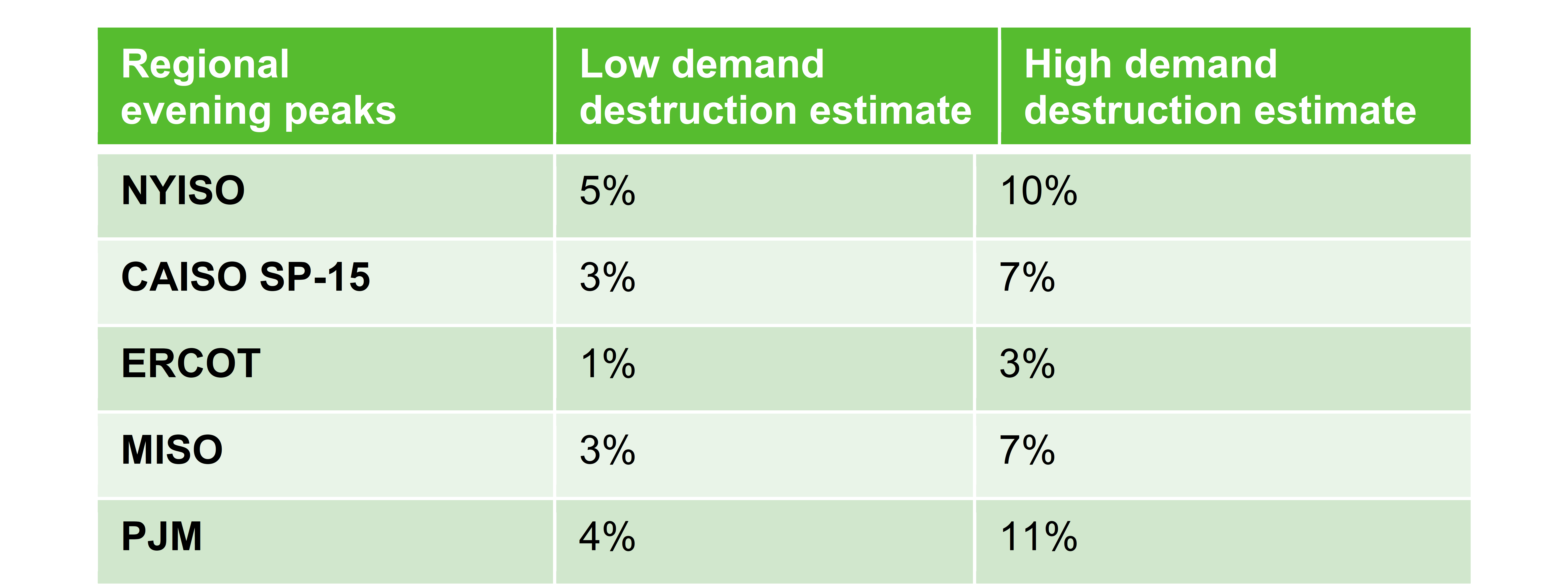U.S. power markets have endured a transformative two and a half months as school, business, and some manufacturing closures have swept across the nation due to COVID-19.
A little more than two months ago, the PRT team was analyzing the first results of our COVID-19 power load demand destruction models. (I wrote about the challenges the new power demand dynamics created in the Enverus Blog.)
To recap, two months ago, the main challenges we faced involved retraining our machine learning-based model to predict power load when the market condition was one that has no comparable historical data to compute.
Now, with great hindsight and two months’ worth of data, our demand destruction models continue to deliver accurate short-term views of the power market impacts from COVID-19. As the U.S. exits the shoulder season and moves into summer, I’m pleased to give a quick review of what we’ve seen across the U.S., and what’s to come as regions across the country undergo varying degrees of changes due to COVID-19 closures and shutdowns.
Power demand trends we have seen so far across the country
- NYISO: With warming temperatures, evening peak demand destruction has grown stronger, but overall has decreased slightly in New York in May. Demand destruction has been stable through May. The evening peak demand destruction seven-day moving average is at 14%.
- CAISO: Demand destruction in Southern California peaked in late April and has declined from 18% to around 10%. The seven-day moving average evening peak demand destruction is 7%.
- ERCOT: Demand destruction peaked at the end of April in Texas and has declined since then. Demand destruction has dropped from the peak of 5% to about 3% now for the 24-hour average. The seven-day moving average for evening peak demand is around 3%.
- MISO: In the Midcontinent, demand destruction peaked in late April and has decreased slightly through May with warmer temperatures. Warmer temperatures have caused evening peak demand destruction to increase. The seven-day demand destruction is at 10%.
- PJM: Demand destruction peaked in mid-late April and has decreased slightly due to warmer temperatures in PJM. Evening peak demand has grown as temperatures have warmed. The seven-day moving average for evening peak demand is around 14%.
Expectations for summer peak load demand recovery
Building upon the analysis we’ve performed since mid-March, we’ve developed medium-term outlooks for the demand destruction that will emerge during evening peaks this summer.
Our forecasts reflect current market conditions, including weather-normalized data to enhance accuracy. Keep in mind that these forecasts will evolve with time as we continue to monitor changing COVID-19 related closures; regions that move into periods of stronger demand destruction will lead to forecast adjustments as conditions warrant.

Access full COVID-19 demand destruction analysis on demand
I recently presented the latest findings from ongoing Enverus Power Intelligence analysis in a webinar, COVID-19: Demand Destruction and Summer Load View. Click here to view more detailed charts and analysis from my presentation.







